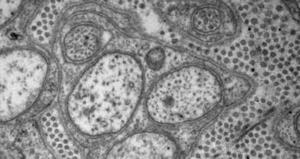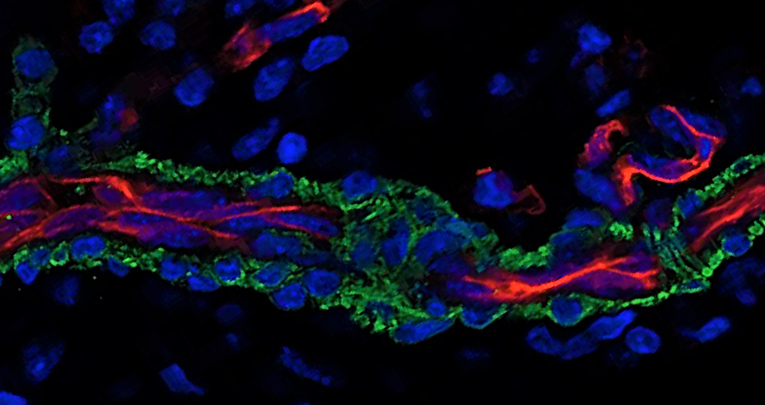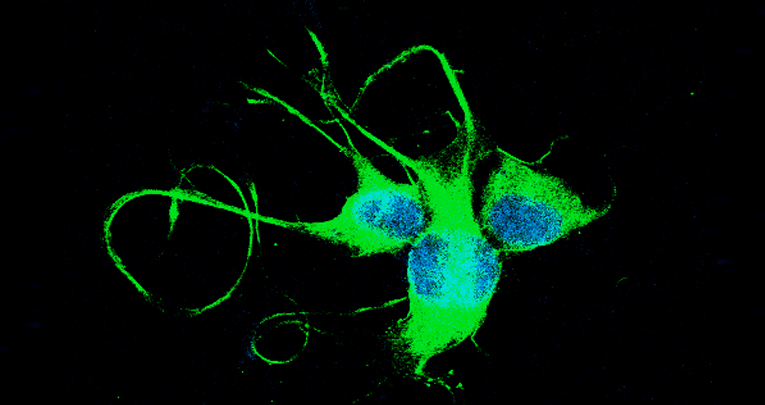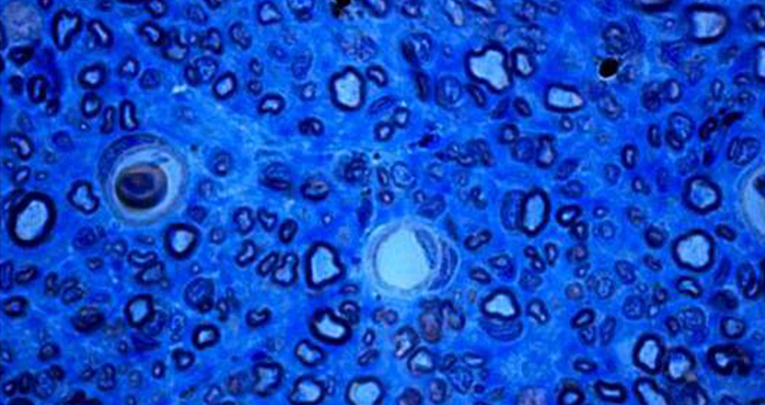Acting Group leader: Stefania Raimondo (Stefano Geuna, Rector of the University of Turin)

Main goal
Identify effective new strategies for improving post-traumatic peripheral nerve regeneration as well as investigate the adaptive changes occurring to the sensory and autonomic neurons as a consequence of exceptional stimuli and/or damage at their periphery.
Experimental models
1. Peripheral nerve repair and regeneration
The definition of effective new strategies for improving posttraumatic nerve regeneration is attracting much attention since, although peripheral nerves do spontaneously regenerate without any treatment, almost never complete recovery of nerve function occurs after microsurgical nerve repair and clinical results are still unsatisfactory.
Yet, in spite of the scientific advancements in tissue engineering and regenerative medicine, applications to the patients suffering from peripheral nerve damage are still limited.
Our research in this field has been directed to the goal of bringing together the four main pillars of tissue engineering:
- Reconstructive microsurgery;
- Transplantation;
- Material science;
- Physical therapy.
As far as reconstructive microsurgery is concerned we have investigated various microsurgical techniques and, in particular, we provided evidence on the effectiveness of termino-lateral neurorrhaphy as an alternative for nerve reconstruction in case of unavailability of proximal nerve stumps. Much attention is also attracting the possibility to reconstruct nerve defects by tissue and cell transplantation.
We have investigated the employment combined autologous transplants made by autologous vein segments enriched with fresh skeletal muscle fibers showing that basal lamina scaffolds of fresh muscle fibers facilitated Schwann cell migration and axon growth and that the NRG1/ErbB gliotrophic system is involved in improving regeneration along this type of conduits.
An alternative to tissue and cell transplantation for bridging nerve lesions with substance loss is the use of conduits made by biomaterials. We have investigated different types of artificial materials used to build up artificial nerve guides and results suggested that biomymetic biomaterials are the most promising components for fashioning effective nerve scaffolds.
Finally, much interest is also attracting physical therapy as a adjuvant to tissue engineering of peripheral nerves. In particular, we have shown that phototherapy improves axonal regeneration and reduces muscle atrophy after nerve injury and repair. It can be expected that an interdisciplinary and multitranslational approach could eventually allow to optimize the strategy for tissue engineering of peripheral nerves and lead to effective clinical applications.
2.
Adaptive changes occurring to the PNS neurons after exceptional stimuli and disease
A very interesting model of plasticity in the PNS is represented by neuron addition in rat dorsal root ganglia (DRGs). The interest in neurogenesis within DRGs has recently increased due to the demonstration that neurospheres can be obtained from adult sensory ganglia explants. We have been focusing our attention on the satellite cell population housed in DRGs which we believe that might represent the stem cell niche of DRGs.
In fact, preliminary results suggest that, after nerve crush, DRG satellite cells can proliferate, change their differentiation lineage and give rise to new DRG neurons, thus revealing an unexpected plasticity of the peripheral sensory compartment in response to injury.
Project
The future lines of research are focused in four main directions:
- to further investigate, by means of an interdisciplinary approach, innovative strategies for the tissue engineering of the damaged peripheral nerves;
- to further investigate the neuronal adaptive changes occurring after peripheral nerve trauma and/or disease;
- to investigate innovative strategies to prevent skeletal muscle atrophy after peripheral nerve damage;
- to investigate the neuroendocrine mechanisms involved in peripheral nerve regeneration;
- to develop new behavioral and stereological protocols for reliable quantitative assessment of the PNS.
Methdological appraoches
In vivo approaches:
- Peripheral nerve axonotmesis
- End-to-end and end-to-side neurorrhaphy
- Tubulization nerve repair
- Immunihistochemistry
- Electron microscopy
- Stereology
- Behavioural analysis of motor function recovery
In vitro approaches:
- Cell lines (NOBECs)
- Primary neuronal and glial cell cultures
- Organotipic cultures and co-cultures
- Biomaterial testing
News
Blood Vessels: The Pathway Used by Schwann Cells to Colonize Nerve Conduits
International Journal of Molecular Sciences , February 2022
Fornasari B. E., Zen F., Nato G., Fogli M., Luzzati F., Ronchi G., Raimondo S., Gambarotta G
Research Group NICO: Nerve Regeneration and Adult Neurogenesis
The neurodynamic treatment induces biological changes in sensory and motor neurons in vitro
Scientific Report , 24 June 2021
Carta G, Gambarotta G, Fornasari B E, Muratori L, ElSoury M, Geuna S, Raimondo S, and Fregnan F
Editorial: Peripheral Nerve Regeneration
Frontiers in Cellular Neuroscience , October 2019
G Gambarotta, S Raimondo, E Udina, J.B Phillips and K Haastert-Talini
Irreversible changes occurring in long-term denervated Schwann cells affect delayed nerve repair
Journal of Neurosurgery
, Jenuary 2017
G. Ronchi, M. Cillino, G. Gambarotta, B. E. Fornasari, S. Raimondo, P. Pugliese, P. Tos, A. Cordova, F. Moschella and S. Geuna.











